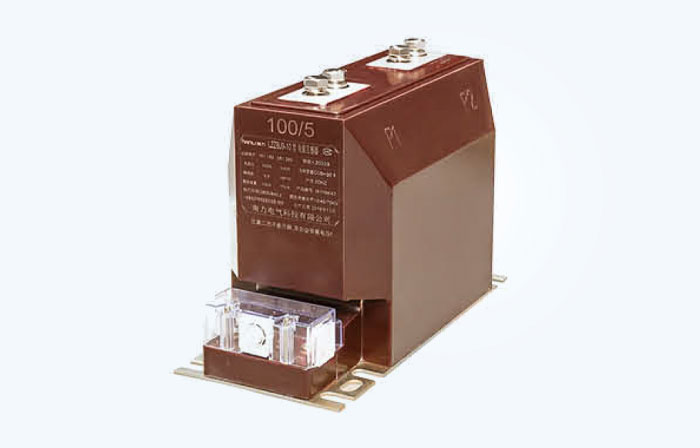Abstract: Current transformers are an indispensable part of substation equipment and play a key role in power systems. This paper studies the principles and applications of current transformers, explores their application in substation equipment, and discusses their advantages and future development directions.
I. Introduction
With the rapid development of power systems, the functions and complexity of substation equipment are constantly improving. As an important component in substation equipment, current transformers act like the nervous system of the human body, monitoring and transmitting current information in the power system, providing an important basis for system operation and protection. Therefore, in-depth research on the application of current transformers will help improve the reliability and stability of substation equipment.

II. Principles and classification of current transformers
1. Principle
Current transformers are devices that use the principle of mutual induction to achieve current conversion. It introduces a secondary coil into the main coil and completes the current conversion according to the ratio of the number of turns of the two coils. When current passes through the main coil, a corresponding current will also be generated in the secondary coil, thereby realizing the measurement and collection of current signals.
2. Classification
According to different application scenarios, current transformers can be divided into two categories: traditional current transformers and digital current transformers. Traditional current transformers use coil turns and core materials to achieve current conversion, which is suitable for traditional power systems. Digital current transformers use digital signal processing technology, which can achieve higher accuracy and remote monitoring functions, and are widely used in modern power systems.
Ⅲ. Application of current transformers in substation equipment
1. Current measurement
The main application of current transformers is to measure current. It can convert high-voltage current into low-voltage signals and perform accurate current measurements through measuring and acquisition devices. This is crucial for protecting equipment and system fault detection, and also provides key data for system operation.
2. Protection device
Current transformers play a vital role in protection devices. By processing and analyzing the signals output by the current transformer, the protection device can monitor the abnormal current in real time. Once a fault occurs, it can cut off the power system in time to protect the safe operation of other equipment.
3. Special applications
In addition to the common applications mentioned above, current transformers also play an important role in some special scenarios. For example, in power system analysis and fault diagnosis, current transformers can extract and analyze current waveforms to provide support for system operation. In addition, current transformers can also be used for power load monitoring and power factor measurement.
Ⅳ. Advantages of current transformers
1. High precision
Current transformers can achieve high precision and accuracy, which can meet the requirements for current measurement. High-precision current measurement can provide more accurate data support and improve the operating stability of the system.
2. Safe and reliable
Current transformers have high safety and reliability during operation. It can resist the impact of high voltage and high current, and ensure the stability and reliability of equipment operation.
3. Small size
Current transformers are small in size and do not take up too much space. This is very important in limited space environments such as substations, which can improve the layout flexibility and operability of equipment.
Ⅴ. Future development trends of current transformers
1. High precision and high bandwidth
With the development of power systems, the accuracy and bandwidth requirements of current transformers are getting higher and higher. Future current transformers need to have higher accuracy and a wider frequency response range to adapt to more complex power systems.
2. Intelligence and digitization
As an important component of substation equipment, the development trend of digitalization and intelligence of current transformers cannot be ignored. Applying digital signal processing technology to current transformers can realize remote monitoring and fault diagnosis, and improve the intelligence level of equipment.
3. Application of new materials and new technologies
With the continuous development of new materials and new technologies, the performance and function of current transformers will be further improved. For example, the use of new core materials can improve the accuracy and stability of current transformers, allowing them to work in a wider temperature range.
VI. Conclusion
This paper studies the principles, classifications and applications of current transformers in substation equipment, and finds that the role of current transformers in power systems is irreplaceable. Current transformers can accurately measure current and play a key role in protection devices. In the future, with the rapid development of power systems, current transformers need to have higher accuracy and wider bandwidth, and also need to be intelligent and digital. By continuously introducing new materials and new technologies, the performance of current transformers will be further improved, providing better support for the reliable operation of power systems.

 EN
EN



